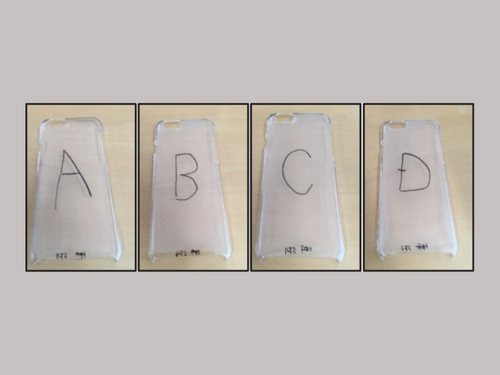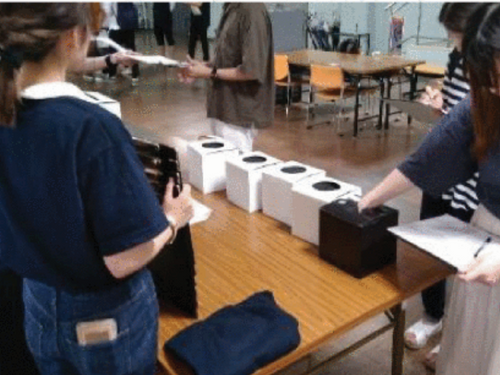By Hiroshima University Department of Public Relations
New research shows that consumers are willing to pay extra for products that give them more to feel.
Smartphone covers with different surface roughness were used in the study. (Courtesy Yoshihiko Kadoya)
To win over consumers, manufacturers should build in touching experience in product designs. A pioneering study found that the value of a product could be increased by differentiating its tactile impression.
The study conducted by researchers from Hiroshima University (HU) and DIC Corporation was carried out on 139 HU students and staff who were also smartphone users. Their findings were published in the journal IEEE Access last August 10.
Participants were asked to show a willingness to pay for smartphone covers with four types of surface texture — which were differentiated by surface smoothness, height, slipperiness, dampness, granularity, stickiness, and dryness — when the reference smartphone cover price was 100 yen and 1000 yen.
The experiment shows that smartphone users were willing to pay a premium for most of the surface textures irrespective of the reference price.
HU’s Professor Yoshihiko Kadoya from the School of Economics and Professor Yuichi Kurita from the School of Engineering, members of their laboratories, and a group of researchers from DIC Corporation conducted the experiment from July 4 to July 11, 2019. A questionnaire covering smartphone cover textures and related tactile impressions, as well as demographic, socioeconomic, and usage-related features of smartphone users, was used to collect information.
Experimental setup. A reference smartphone cover and smartphone covers with varying surface textures were placed in different boxes. (Courtesy Yoshihiko Kadoya)
The study used a contingent valuation method and an open-ended question on how much respondents were willing to pay for a certain type of surface texture. The reference product was a 100-yen plastic smartphone cover from a 100-yen shop without surface texture for which the reference prices were fixed at 100 yen and 1000 yen. Participants were asked to compare between the reference smartphone cover and smartphone covers with surface textures A, B, C, and D and to show their willingness to pay when the reference price was 100 yen or 1000 yen.
Kadoya, the first author and lead researcher of the experiment, said that surface texture could be an important aspect of product design, having the ability to influence the price. However, the commercial viability of the surface texture has hardly been empirically examined. We conducted this pioneering study to lay the foundation for full-scale studies in the future, he added.
The study results show that participants’ willingness to pay premiums for tactile impressions could be quite high. Moreover, willingness to pay for tactile impressions had a statistically significant association with users’ age, usage time, and living conditions.
Kadoya further added that the experiment would benefit manufacturers in understanding the commercial value of surface textures. Manufacturers of electronic devices, laptops, wallets, furniture, and others could also benefit from designing appropriate surface textures for their products. Additionally, the findings of the study have implications for online business trends, particularly during the COVID-19 pandemic. Since customers value surface textures, further efforts should be made to digitize the feeling of surface texture for online trading.
Media Contact
Inquiries on the study
Yoshihiko Kadoya
Professor, Hiroshima University Graduate School of Humanities and Social Sciences
E-mail: ykadoya*hiroshima-u.ac.jp
(Note: Please replace * with @)
Inquiries on the story
Hiroshima University Department of Public Relations
TEL: 082-424-3701
E-mail: koho * office.hiroshima-u.ac.jp
(Note: Please replace * with @)

 Home
Home
















